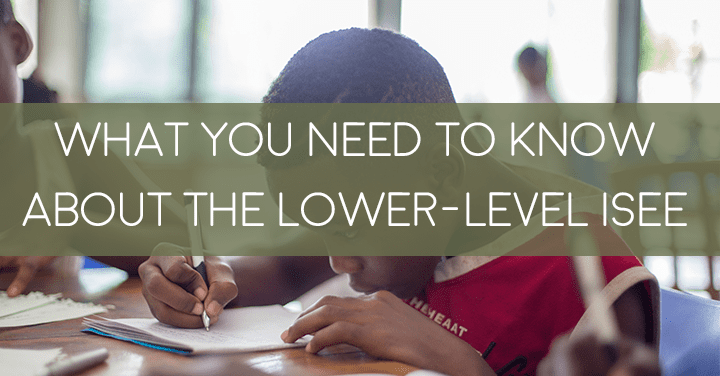If your child is applying to a private or independent school for grades 5 or 6, you may be asked to register them for the Lower Level ISEE (Independent School Entrance Exam).
The ISEE can feel like a big milestone — especially for younger students who may not have encountered a standardized test before. Here’s everything you need to know to feel confident and prepared.
What Is the Lower Level ISEE?
The Lower Level ISEE is a nationally recognized entrance exam used by many private and independent schools as part of the admissions process for incoming 5th and 6th graders. The test is designed to measure academic skills appropriate for this age group and provides schools with standardized insight into a student’s reading, writing, and math abilities.
Students can take the test in-person at schools and test centers, or at home through remote proctoring.
What’s on the Lower Level ISEE?
The test consists of five sections, always presented in the same order:
1. Verbal Reasoning
Focuses on vocabulary and reasoning skills through synonyms and sentence completions
🕐 20 minutes | 34 questions
2. Quantitative Reasoning
Tests logical reasoning and mathematical thinking (not just computation)
🕐 35 minutes | 38 questions
3. Reading Comprehension
Students read short passages and answer multiple-choice questions
🕐 25 minutes | 25 questions
4. Mathematics Achievement
Covers grade-level math concepts and problem-solving
🕐 30 minutes | 30 questions
5. Essay (Unscored)
Students respond to a simple, open-ended prompt. The essay is not scored but is sent directly to schools for review as a sample of the student’s writing ability.
🕐 30 minutes | 1 prompt
How Is the Lower Level ISEE Scored?
Students receive:
-
Scaled scores (760–940 per section)
-
Percentile ranks (compared to other students in the same grade over the past three years)
-
Stanine scores (a 1–9 summary scale schools use to compare students)
Although the essay isn’t scored, admissions teams often read it closely to understand a child’s voice, clarity, and writing fluency.
When Should Students Take the ISEE?
Most families choose to test in fall or early winter, depending on school application deadlines. Students may take the ISEE once per testing season, with three total testing seasons offered each year.
We recommend beginning prep at least 2–3 months before your chosen test date to ensure students have time to grow confident with the format and strengthen key skills.
How Can We Prepare?
The Lower Level ISEE is often a child’s first experience with formal testing, so a gentle, thoughtful approach works best. At Thrive, we focus on:
✅ Building confidence with early exposure to ISEE-style questions
✅ Targeting academic skill gaps in math, vocabulary, and reading
✅ Strengthening endurance through timed practice
✅ Coaching students on how to write short, organized essays
✅ Offering a positive, low-pressure environment to reduce test anxiety
We offer full-length diagnostic practice tests, 1:1 tutoring with top educators, and access to personalized digital practice tools to help students feel confident and prepared.
Final Thought
The Lower Level ISEE is just one part of the admissions puzzle — but it can feel like a big step for young learners. With the right prep and encouragement, students can walk into test day feeling proud, calm, and ready to do their best.
👉 Contact us to schedule a free consultation or learn more about ISEE prep for grades 5–6.





